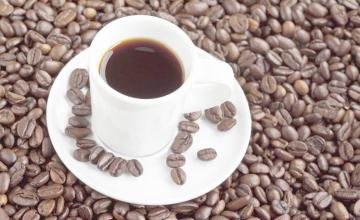The United States: there are no taboos about the unique coffee drinking habits of American style.
When Americans drink coffee, it is like playing a game without rules, laissez-faire without taboos. Americans are dismissive of all kinds of exquisite coffee made by Europeans. Americans drink coffee freely, and at the same time, coffee goes deep into their lives and is difficult to separate, and the influence is so deep that it is not considered a life without coffee. It is said that the Apollo 13 spaceship, which carried a man to the moon for the first time, had a life-and-death failure on its way home. At that time, the ground crew comforted the three astronauts with a word: come on! Delicious hot coffee is waiting for your return. Americans can't do without coffee almost 24 hours a day, whether at home, in the office, in public, or at a roadside vending machine. This consumes 1/3 of the world's coffee production and is the country with the largest coffee consumption in the world.
Generally speaking, life in the United States is relatively busy and tense, unlike people in Europe and the Middle East who are able to enjoy life in a leisurely mood. When drinking coffee, it is often a large pot of electrothermal filtered coffee (Drip Coffee Marker). From morning to night, because there is too much water, there is less coffee (10 grams of coffee in a cup versus 200 CC of water), and the taste is particularly weak. Therefore, many people criticize American coffee for being really bad. In fact, in all parts of the United States, coffee lovers can still taste their favorite coffee taste with a little more effort. If pure American coffee is divided into two categories, the east coast of the United States is stronger than the west coast, and the south is stronger than the north. Ethnically speaking, immigrants from southern Europe and Latinos prefer strong coffee to those from Britain, Germany and northern Europe.
In addition, although the United States is the largest exporter of instant coffee, not many people in the United States drink instant coffee. In recent years, they pay more and more attention to the results of a healthy diet, the market for non-caffeine (Coffeeineless Coffee) is increasing, and coffee without sugar is becoming more and more common.

Important Notice :
前街咖啡 FrontStreet Coffee has moved to new addredd:
FrontStreet Coffee Address: 315,Donghua East Road,GuangZhou
Tel:020 38364473
- Prev

Introduction to the production process and main ingredients of coffee
Caffeine, the main ingredient of coffee: has a particularly strong bitter taste and stimulates the central nervous system, heart and respiratory system. Appropriate amount of caffeine can reduce muscle fatigue and promote digestive juice secretion. It promotes kidney function, has a diuretic effect, and helps the body expel excess sodium ions from the body. Tannic acid: the boiled tannic acid will decompose into pyrouric acid, so the coffee brewed for too long
- Next

Why did coffee come into Arabia? why was it discovered by humans?
After coffee became a popular drink in the southern Arabian Peninsula, it was brought home by Islamists who made a pilgrimage to Mecca, where it began to spread rapidly in Arab countries and landed in Turkey and Persia one after another. The widespread acceptance of coffee will inevitably lead to the birth of cafes. It is said that the earliest cafes were born for religious reasons, but they will be performed soon.
Related
- Beginners will see the "Coffee pull flower" guide!
- What is the difference between ice blog purified milk and ordinary milk coffee?
- Why is the Philippines the largest producer of crops in Liberia?
- For coffee extraction, should the fine powder be retained?
- How does extracted espresso fill pressed powder? How much strength does it take to press the powder?
- How to make jasmine cold extract coffee? Is the jasmine + latte good?
- Will this little toy really make the coffee taste better? How does Lily Drip affect coffee extraction?
- Will the action of slapping the filter cup also affect coffee extraction?
- What's the difference between powder-to-water ratio and powder-to-liquid ratio?
- What is the Ethiopian local species? What does it have to do with Heirloom native species?

